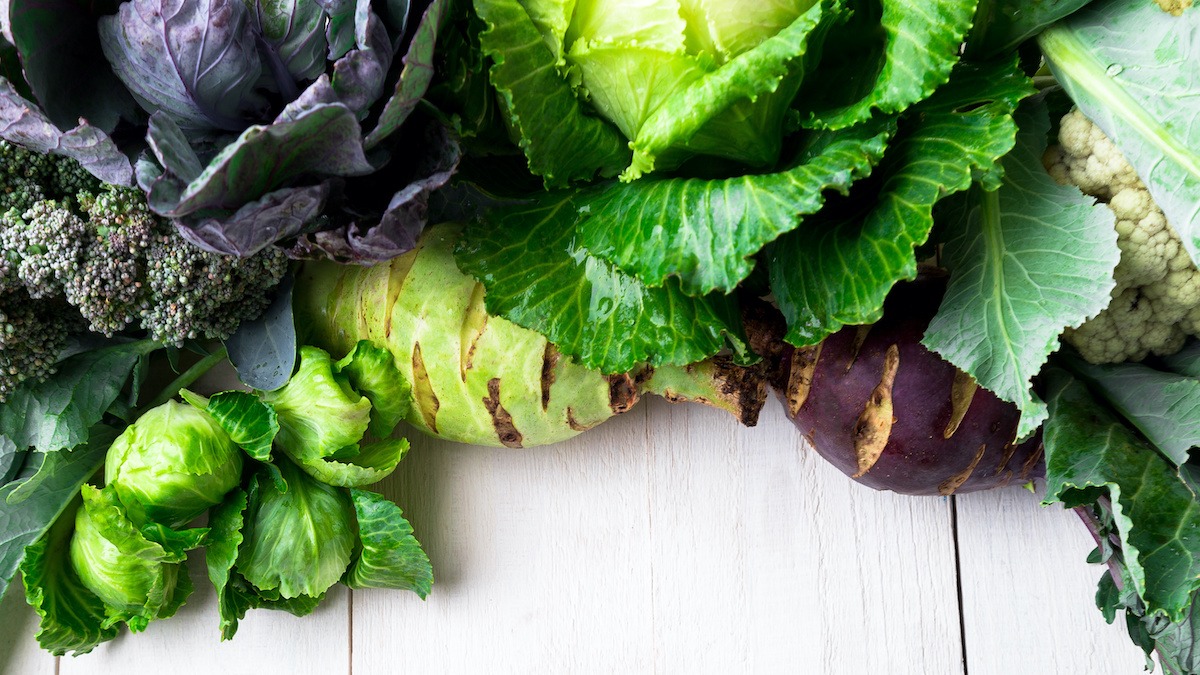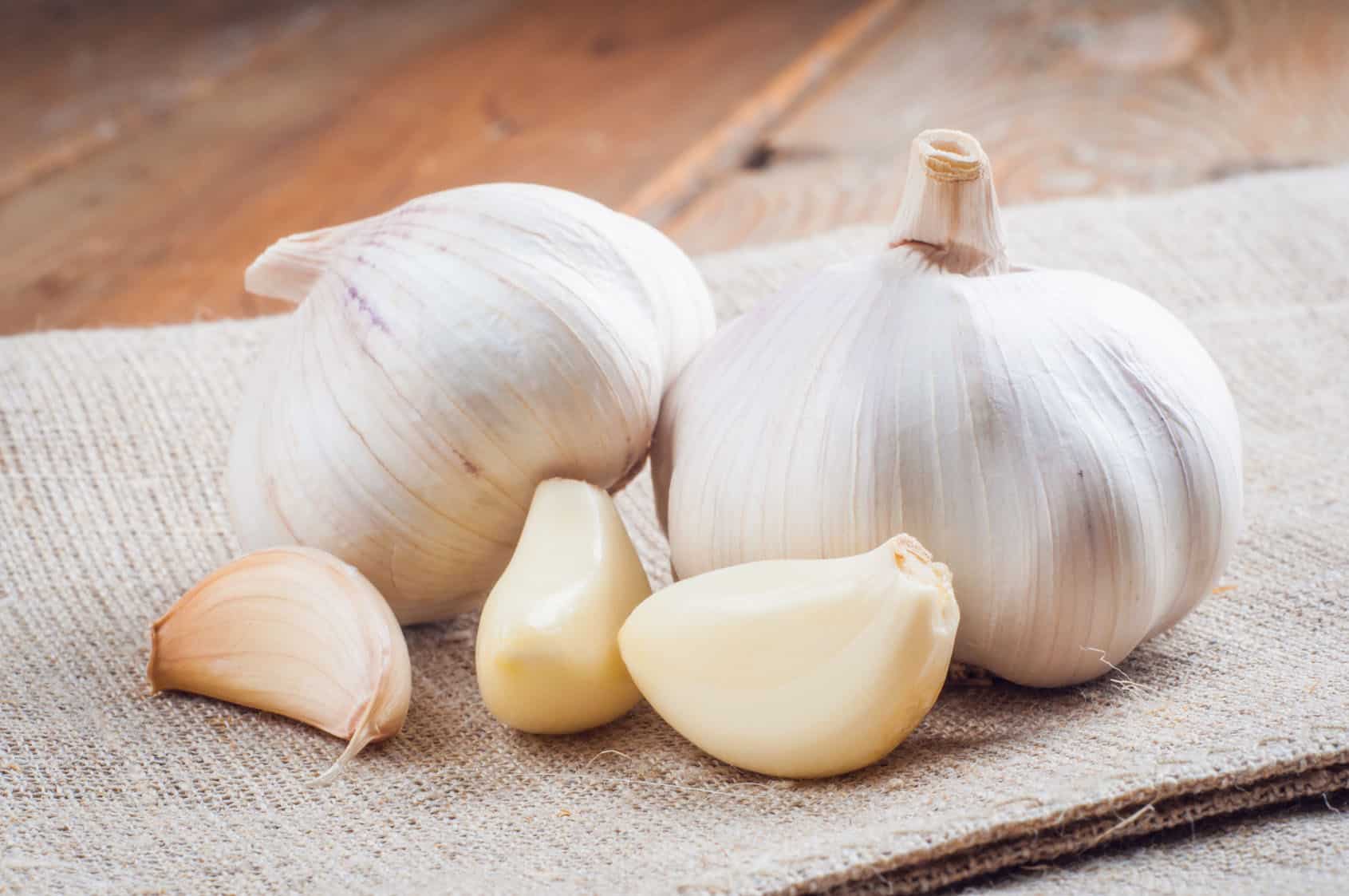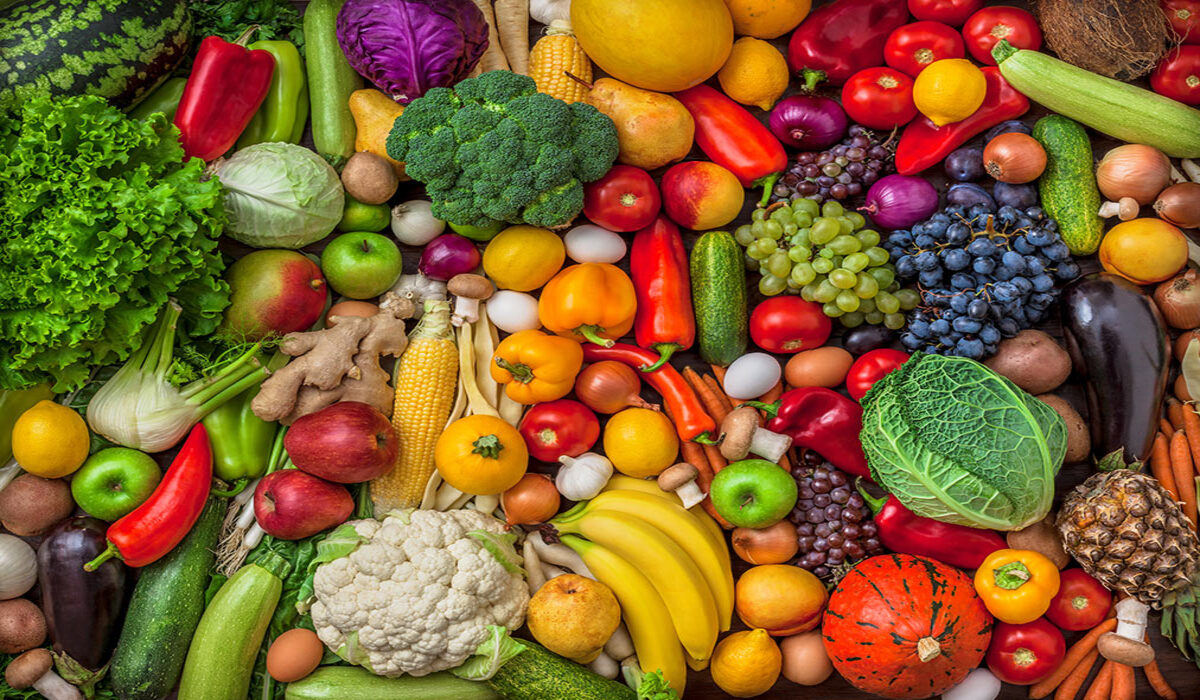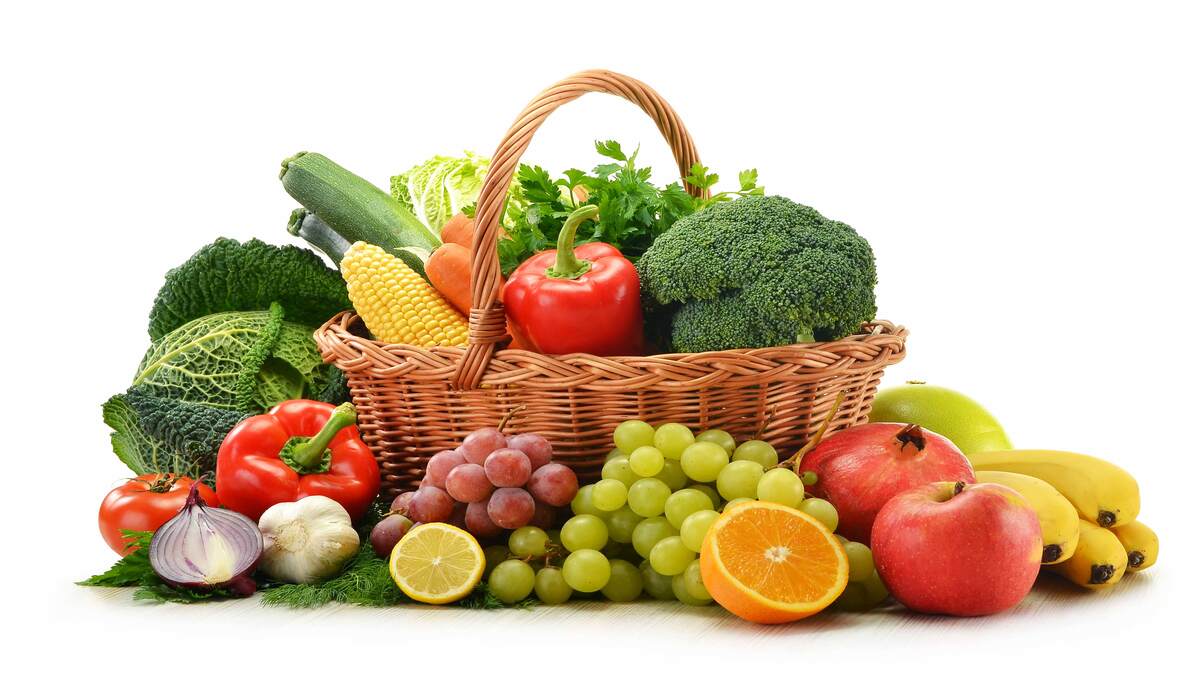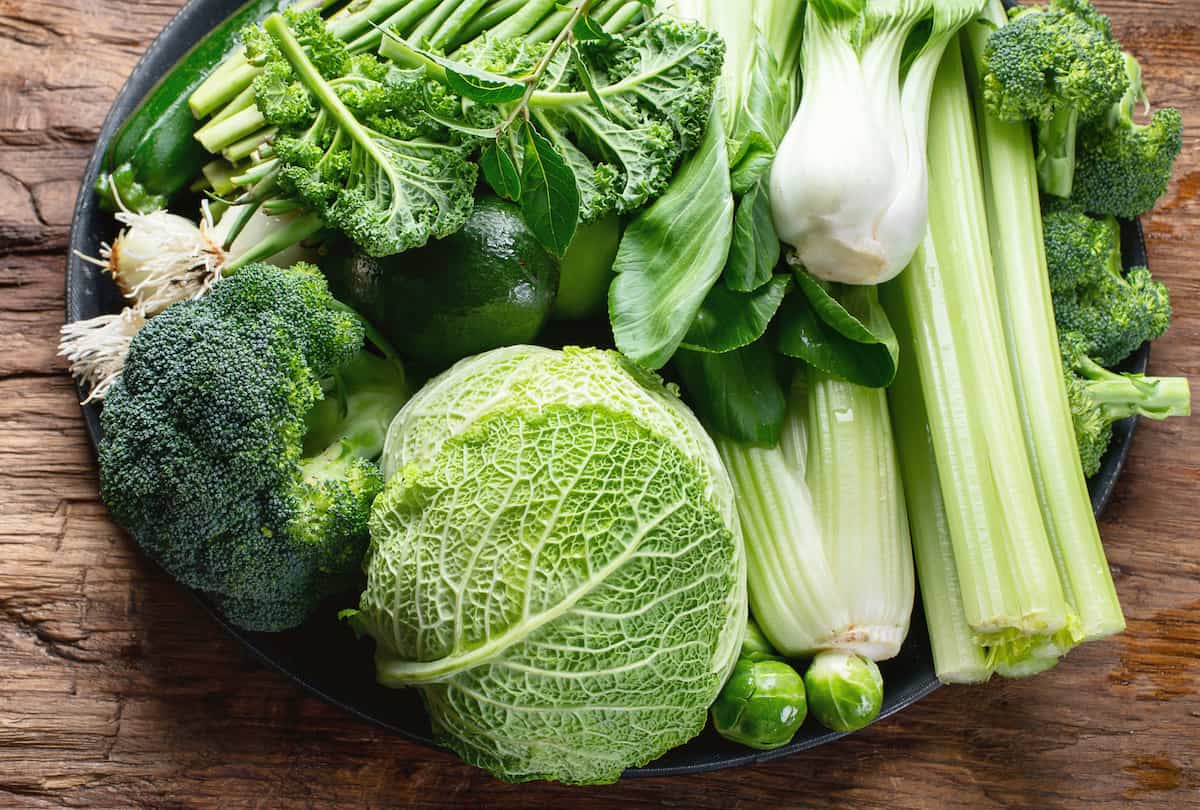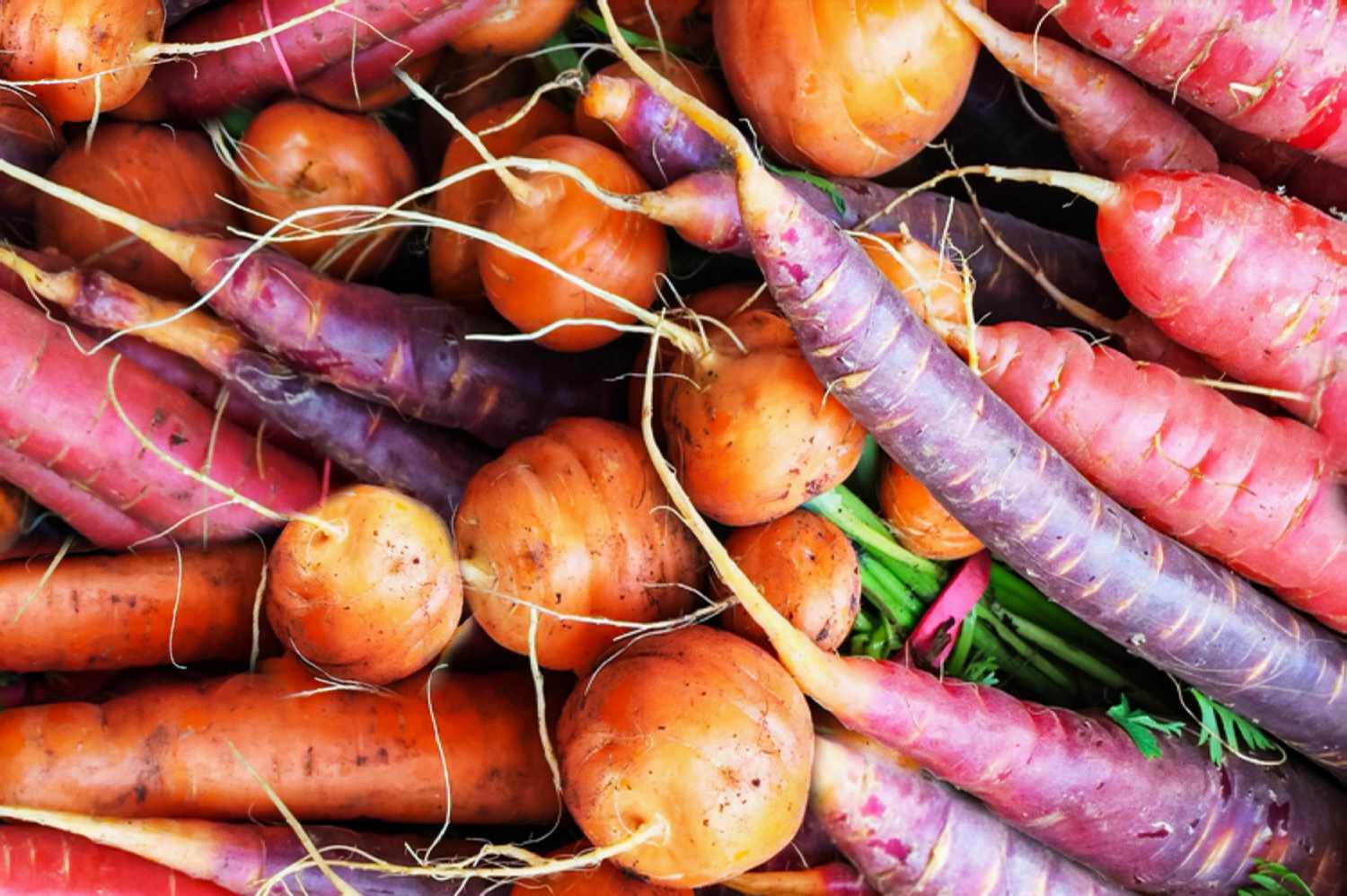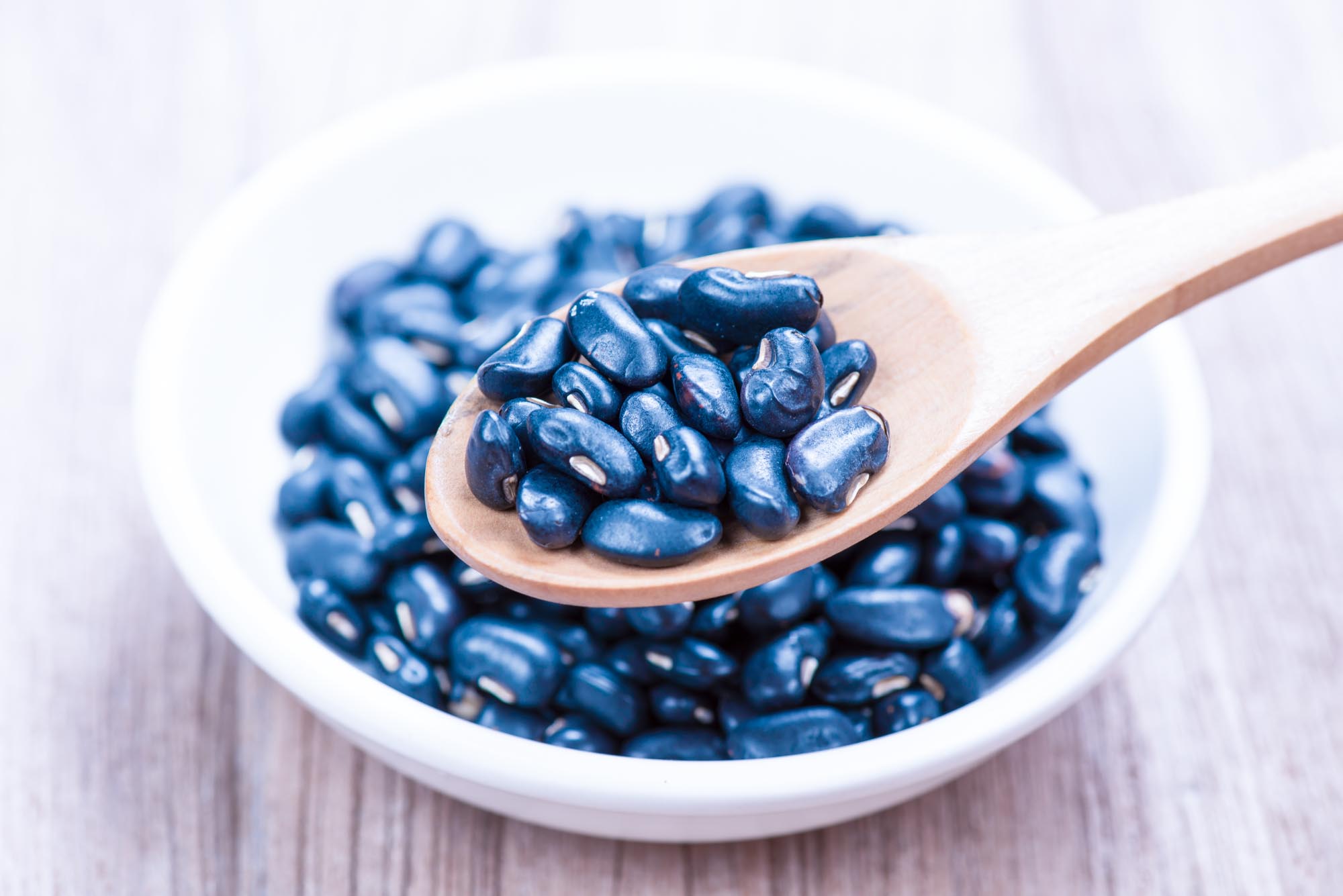Home>Types of Gardening>Edible Gardening>What Are The Cheapest Vegetables


Edible Gardening
What Are The Cheapest Vegetables
Modified: January 22, 2024
Discover the cheapest vegetables for edible gardening. Save money while growing your own food with these budget-friendly options.
(Many of the links in this article redirect to a specific reviewed product. Your purchase of these products through affiliate links helps to generate commission for Chicagolandgardening.com, at no extra cost. Learn more)
Table of Contents
Introduction
When it comes to edible gardening, many people are drawn to the idea of growing their own vegetables. Not only is it a rewarding and fulfilling hobby, but it also allows you to have fresh and healthy produce at your fingertips. However, one common concern that people often have is the cost of starting and maintaining an edible garden. Thankfully, there are several vegetables that are not only easy to grow but also budget-friendly.
In this article, we will explore ten of the cheapest vegetables to grow in your own garden. These vegetables are not only affordable to purchase the seeds or seedlings, but they also require minimal effort and resources to thrive. Whether you have a large backyard or just a small balcony, you can enjoy the benefits of fresh, home-grown vegetables without breaking the bank.
Growing your own vegetables not only saves you money but also allows you to have control over the entire growing process. You can choose to use organic methods, avoid harmful pesticides, and experiment with different varieties to suit your taste. Plus, there’s nothing quite like the satisfaction of harvesting a bountiful crop from your own garden.
Now, let’s dive into the world of edible gardening and discover the ten cheapest vegetables that you can grow on a budget!
Cabbage
Cabbage is not only a versatile and nutritious vegetable, but it is also known for being budget-friendly. Whether you prefer green cabbage, red cabbage, or savoy cabbage, all varieties are relatively inexpensive to grow from seeds or starter plants.
Cabbage is a cool-season crop that thrives in mild climates. It is typically planted in early spring or late summer, depending on your location. It is a relatively low-maintenance vegetable as it requires regular watering and protection from pests, such as cabbage worms. However, with proper care, you can enjoy a bountiful harvest of crisp and flavorful cabbage heads.
One of the great things about cabbage is its versatility in the kitchen. It can be eaten raw in salads, cooked in soups and stir-fries, or even fermented into sauerkraut. This makes it an excellent choice for gardeners who want to maximize their options when it comes to incorporating homegrown produce into their meals.
In addition to being budget-friendly and versatile, cabbage is also packed with nutrients. It is rich in vitamins C and K, as well as dietary fiber. Adding cabbage to your diet can support a healthy immune system and promote digestion.
Whether you have a small garden plot, a raised bed, or even a container, growing cabbage is a feasible option. Be sure to provide enough space for the plants to spread out, as cabbage heads can grow quite large. With regular care and attention, you can enjoy a cost-effective and flavorful harvest of cabbage from your own garden.
Carrots
Carrots are a popular and affordable vegetable that can easily be grown in your own backyard. They are not only cost-effective but also packed with essential nutrients such as beta-carotene, fiber, and vitamins A and K.
One of the great things about growing carrots is that they can be grown in various soil types and containers, making them suitable for gardens of all sizes. They do best in loose, well-draining soil, so make sure to prepare the soil by removing any rocks or clumps before planting the seeds.
Carrot seeds are inexpensive and widely available. They can be sown directly into the ground or in containers. It’s important to keep the soil consistently moist during the germination period, which usually takes around two weeks. Once the seedlings emerge, thin them out to provide enough space for the carrots to grow properly.
Carrots are a versatile vegetable that can be enjoyed in numerous ways. They can be eaten raw as a snack, grated into salads, boiled, roasted, or even juiced. Their sweet and crunchy texture adds a delightful element to a variety of dishes.
In terms of care, carrots require consistent watering to keep the soil moist, especially during dry periods. They also benefit from regular weeding to ensure they have enough space to grow and to reduce competition for nutrients. A layer of mulch can help keep the soil moist and prevent weeds from taking over.
Harvesting carrots is a rewarding experience. They are usually ready to be harvested around 60-80 days after sowing the seeds, depending on the variety. Gently loosen the soil around the carrot and pull it out carefully to avoid breaking the root. Enjoy the satisfaction of pulling fresh and crunchy carrots from your garden!
Onions
Onions are a staple ingredient in many dishes and are surprisingly easy and inexpensive to grow in your own garden. With their versatile flavor and culinary uses, having a supply of fresh onions on hand can be both cost-effective and convenient.
Onions can be grown from either seeds or sets, which are small onion bulbs. Sets are a popular choice for beginners as they are easier to handle and have a higher success rate. They are readily available at garden centers and are relatively affordable.
Before planting, prepare the soil by adding compost or well-rotted manure to improve its fertility. Onions prefer well-draining soil and should be planted in a sunny spot in your garden. They can also be grown in containers if you have limited space.
Onions require consistent watering throughout their growing season. However, it’s important not to overwater them to prevent rotting. They also benefit from regular weeding to reduce competition for nutrients and space.
One of the great things about growing onions is their long shelf life. Once harvested, onions can be stored for several months in a cool and dry place, extending their usability and reducing the need to purchase them from the store.
In addition to their culinary uses, onions offer several health benefits. They are rich in antioxidants and contain compounds that are believed to have anti-inflammatory and immune-boosting properties. Incorporating freshly harvested onions into your meals can add flavor and contribute to a healthy diet.
Whether you enjoy red onions, white onions, or sweet onions, growing your own onions can be a cost-effective way to have a steady supply of this versatile vegetable right in your backyard.
Potatoes
Potatoes are a popular staple food that can be easily grown in your own garden, making them a cost-effective choice for edible gardening. They are versatile, nutritious, and can be stored for an extended period, making them an ideal vegetable for self-sufficiency.
One of the benefits of growing potatoes is that they can be grown from seed potatoes, which are small potatoes that are certified disease-free. These seed potatoes are relatively inexpensive and can be found at garden centers or purchased online. You can also save potatoes from your previous harvest to use as seed potatoes for the next season.
Potatoes grow best in well-draining soil with a pH level between 5.0 and 6.0. It is recommended to plant them in raised beds or mounds to ensure good drainage. Potatoes require full sun to thrive, so choose a sunny spot in your garden.
To plant potatoes, dig a trench about 6 inches deep and place the seed potatoes about 12 inches apart. Cover them with soil and water thoroughly. As the plants grow, make sure to mound soil around the base of the plants to promote tuber development and prevent the potatoes from being exposed to sunlight, which causes them to turn green.
Potatoes require consistent watering, especially during dry periods, to ensure proper tuber formation. Keep an eye out for pests such as potato beetles and diligently remove them to prevent damage to the plants.
Harvesting potatoes is an exciting process. Potatoes are usually ready to harvest when the plants have started to die back. Carefully dig around the plant to avoid damaging the tubers, and then gently lift them out of the ground. Allow the potatoes to cure for a few days in a cool and dark place before storing them.
With proper care and attention, you can enjoy a bountiful harvest of nutritious and delicious potatoes from your own garden. From mashed potatoes to fries, soups, and stews, there are endless ways to enjoy this versatile and budget-friendly vegetable.
Zucchini
Zucchini is a popular and prolific vegetable that is not only budget-friendly but also easy to grow in your own garden. With its mild flavor and versatile uses, zucchini is a great addition to any edible garden.
Zucchini plants thrive in warm weather, making them perfect for summer gardening. They can be grown from seeds or transplants, both of which are relatively inexpensive and widely available. Choose a sunny location in your garden and ensure that the soil is well-draining and rich in organic matter.
When planting zucchini, space the plants about 2-3 feet apart to allow for proper air circulation and to prevent overcrowding. Zucchini plants require regular watering, especially during dry spells, to ensure steady growth and productivity. It’s important to keep the soil evenly moist, but not waterlogged.
One of the advantages of growing zucchini is its bountiful harvest. Zucchini plants are known for their high productivity, often producing an abundance of fruits throughout the growing season. Regular harvesting promotes continuous fruit production and prevents the zucchinis from becoming oversized and tough.
Zucchini can be used in a variety of dishes, both cooked and raw. It can be sautéed, grilled, roasted, or used as a nutritious addition to salads. It can also be spiralized to create zucchini noodles, commonly known as zoodles, as a healthier alternative to pasta.
In terms of nutrition, zucchini is low in calories and rich in dietary fiber, vitamins, and minerals. It is a great source of vitamin C and contains antioxidants that support a healthy immune system.
If you have limited garden space, zucchini can also be grown in containers, making it a versatile option for urban gardening. Just ensure that the container is large enough to accommodate the plant and has adequate drainage.
By growing zucchini in your own garden, you can enjoy a cost-effective supply of this versatile and nutritious vegetable throughout the summer months.
Green Beans
Green beans, also known as snap beans or string beans, are a popular and affordable vegetable to grow in your garden. They are not only cost-effective but also delicious and packed with nutrients.
Green beans are relatively easy to grow from seeds and germinate quickly, making them a great option for beginner gardeners. They can be planted directly in the ground or in containers, as long as they are provided with a trellis or support to climb on.
Choose a sunny spot in your garden with well-draining soil. It’s important to prepare the soil by adding compost or organic matter to ensure optimal growth. Plant the seeds about 1 to 2 inches deep and 3 to 4 inches apart, and keep the soil consistently moist until germination.
Green beans thrive in warm weather and require regular watering, especially during dry spells. Mulching around the base of the plants can help retain moisture in the soil and prevent weed growth.
One of the benefits of growing green beans is their high productivity. With proper care, green bean plants can produce an abundance of beans throughout the growing season. Regular harvesting promotes continuous production and allows for the development of tender and flavorful beans.
Green beans can be enjoyed in a variety of ways. They can be steamed, sautéed, stir-fried, or boiled. They can also be added to salads or casseroles. This versatile vegetable adds a crisp texture and vibrant color to any dish.
In terms of nutrition, green beans are low in calories and rich in dietary fiber, vitamins A and C, and potassium. They are a great source of antioxidants and can contribute to a healthy diet.
Whether you choose to grow bush beans or pole beans, green beans are a cost-effective vegetable that can provide a delicious and nutritious addition to your meals. So why not give them a try and enjoy the abundant harvest from your garden?
Spinach
Spinach is a nutrient-packed leafy green that is not only affordable but also easy to grow in your own garden. With its versatility in the kitchen and numerous health benefits, spinach is a fantastic vegetable to include in your edible gardening plans.
Spinach can be grown from seeds or transplants, both of which are relatively inexpensive and readily available. It is a cool-season crop and thrives in cooler temperatures, making it an ideal choice for spring and fall gardening.
Choose a location in your garden that receives partial shade or full sun, depending on the climate. Spinach prefers well-draining soil that is rich in organic matter. Before planting, prepare the soil by incorporating compost or well-rotted manure to improve its fertility.
To grow spinach, sow the seeds directly into the ground or in containers, following the recommended spacing on the seed packet. Keep the soil consistently moist during germination and provide regular watering throughout the growing season. Mulching can help retain moisture and suppress weed growth.
One of the benefits of growing spinach is that it matures relatively quickly. Baby spinach leaves can be harvested as soon as they reach a desirable size, usually within 20 to 40 days. When harvesting, it’s important to pick the outer leaves while allowing the inner ones to continue growing.
Spinach is known for its versatility in the kitchen. It can be eaten raw in salads, sautéed as a side dish, added to soups and stews, or blended into smoothies. It is packed with nutrients, including vitamins A and C, iron, and dietary fiber, making it a nutritious addition to your meals.
Spinach is a prolific vegetable that can continue to produce leaves for an extended period if properly cared for. Regularly harvest the outer leaves, and the plants will continue to produce fresh and tender leaves.
With its affordability, versatility, and nutritional value, growing spinach in your own backyard is a cost-effective way to have a continuous supply of this healthy leafy green.
Bell Peppers
Bell peppers are colorful and versatile vegetables that are not only delicious but also budget-friendly to grow in your own garden. With their vibrant hues and crisp texture, bell peppers can bring life and flavor to various dishes.
Bell peppers can be grown from seeds or starter plants, which are easily available and relatively inexpensive. They can be grown in garden beds, containers, or even in hanging baskets, making them a great option for gardeners with limited space.
Choose a sunny spot in your garden with well-draining soil. Bell peppers thrive in warm weather, so it’s best to wait until the soil has warmed up before planting. Adding compost or organic matter to the soil will help provide the necessary nutrients for healthy growth.
Plant the bell pepper transplants or sow the seeds at the recommended spacing, generally 18 to 24 inches apart. Water the plants consistently, keeping the soil evenly moist but not waterlogged.
One of the benefits of growing bell peppers is their long growing season. They start producing fruits earlier than most other vegetables and continue to yield throughout the summer months. Harvesting bell peppers when they reach their desired size encourages further fruit production.
Bell peppers can be enjoyed in various ways, whether raw in salads, stuffed, grilled, roasted, or added to stir-fries and sauces. Their sweet and crunchy flavor makes them a versatile ingredient in a wide range of dishes.
In addition to their delicious taste, bell peppers are also packed with nutrients. They are high in vitamin C and other antioxidants that support a healthy immune system. They also contain dietary fiber and are low in calories, making them a great addition to a balanced diet.
With their affordable price and potential for high yields, growing bell peppers in your own garden can provide you with a steady supply of these vibrant and flavorful vegetables throughout the growing season.
Tomatoes
Tomatoes are one of the most popular and cost-effective vegetables to grow in your own garden. With their versatility, rich flavors, and numerous health benefits, tomatoes are a must-have in any edible gardening endeavor.
Tomatoes can be grown from seeds or transplants, with both options being readily available and affordable. They can be planted in garden beds, raised containers, or even hanging baskets, making them suitable for gardens of all sizes.
Choose a sunny spot in your garden, as tomatoes thrive in full sun. Prepare the soil by adding compost or organic matter, as tomatoes require well-draining soil enriched with nutrients. It’s important to space the plants properly to allow air circulation and prevent overcrowding.
Tomatoes require consistent moisture, especially during the fruiting stage. However, it’s crucial to avoid overwatering, which can lead to diseases and affect the flavor of the fruit. Mulching around the plants helps retain moisture and suppress weed growth.
One of the advantages of growing tomatoes is the wide variety available. From cherry tomatoes to beefsteak tomatoes, there are options to suit every taste and culinary preference. Tomatoes can be used in an array of dishes, such as salads, salsas, sauces, soups, and so much more.
In addition to their delicious taste, tomatoes are rich in vitamins A and C, as well as antioxidants. They also contain lycopene, a compound that has been linked to various health benefits, including reducing the risk of certain types of cancer.
Harvesting tomatoes is a rewarding experience. Depending on the variety, tomatoes can be picked when they are fully ripe or slightly underripe for longer shelf life. The taste and flavor of homegrown tomatoes make them a truly special addition to your meals.
Whether you prefer slicing tomatoes for sandwiches, juicy tomatoes for snacking, or cherry tomatoes for salads, growing your own tomatoes can provide you with a cost-effective and flavorful supply throughout the growing season.
Radishes
Radishes are small but mighty vegetables that are both affordable and easy to grow in your own garden. With their crisp texture and peppery flavor, radishes can add a delightful kick to your salads, sandwiches, and various other dishes.
Radishes are quick-growing vegetables, making them a great choice for beginner gardeners and those looking for fast results. They can be grown from seeds, which are very inexpensive and widely available. Radishes are also a perfect crop for succession planting, allowing you to have a continuous harvest throughout the growing season.
Choose a sunny location in your garden with well-draining soil. Radishes prefer cooler temperatures and can be grown in spring or fall. Thoroughly prepare the soil by removing rocks and loosening it to create a friable bed for the seeds.
Sow the radish seeds directly into the soil, following the recommended spacing on the seed packet. Cover the seeds lightly with soil and water gently. Keep the soil consistently moist to encourage proper germination and growth.
One of the benefits of growing radishes is their minimal care requirements. They are relatively hardy and resistant to many pests and diseases. However, they do require regular watering to prevent them from becoming woody or tasting too pungent.
Radishes are known for their fast growth, usually reaching maturity within 3-4 weeks. Once they have reached their desired size, they can be harvested by gently pulling them out of the ground. Enjoy the satisfaction of harvesting these vibrant root vegetables from your own garden.
Radishes are not only delicious but also nutritious. They are rich in vitamin C, fiber, and potassium. Incorporating radishes into your diet can add a refreshing and healthy element to your meals.
Whether you enjoy radishes in salads, as a zesty topping for tacos, or pickled as a condiment, growing your own radishes can provide you with an affordable and tasty addition to your culinary endeavors.
Conclusion
Edible gardening allows you to not only have a sustainable and rewarding hobby but also save money by growing your own vegetables. In this article, we explored ten of the cheapest vegetables to grow in your own garden, including cabbage, carrots, onions, potatoes, zucchini, green beans, spinach, bell peppers, tomatoes, and radishes.
By growing these budget-friendly vegetables, you can enjoy the benefits of fresh, homegrown produce without breaking the bank. From the versatile cabbage and zucchini to the nutritious carrots and spinach, each of these vegetables offers unique flavors and culinary uses.
When planning your edible garden, consider the specific requirements of each vegetable, such as soil type, sun exposure, and watering needs. By providing the right conditions and proper care, you can maximize their growth and harvest a bountiful supply of delicious and nutritious produce.
Not only are these vegetables cost-effective, but they also offer excellent nutritional value. They are rich in vitamins, minerals, and dietary fiber, contributing to a healthy diet and supporting overall well-being.
Moreover, growing your own vegetables allows you to have control over the entire process, from choosing organic methods to avoiding harmful pesticides. You also have the opportunity to experiment with different varieties and cater to your personal taste preferences.
Whether you have a spacious backyard or just a small balcony, there are options for edible gardening that suit your available space. From traditional garden beds to raised containers, vertical trellises, and even hanging baskets, you can adapt your gardening approach to fit your needs.
So, why not embark on the journey of edible gardening and experience the satisfaction of growing your own budget-friendly and delicious vegetables? Start small, choose your favorite vegetables, and gradually expand your garden as you gain more confidence and experience.
By incorporating these ten cheapest vegetables into your edible garden, you can enjoy the benefits of fresh and flavorful produce, save money, and embrace a healthier and more sustainable lifestyle. Happy gardening!
